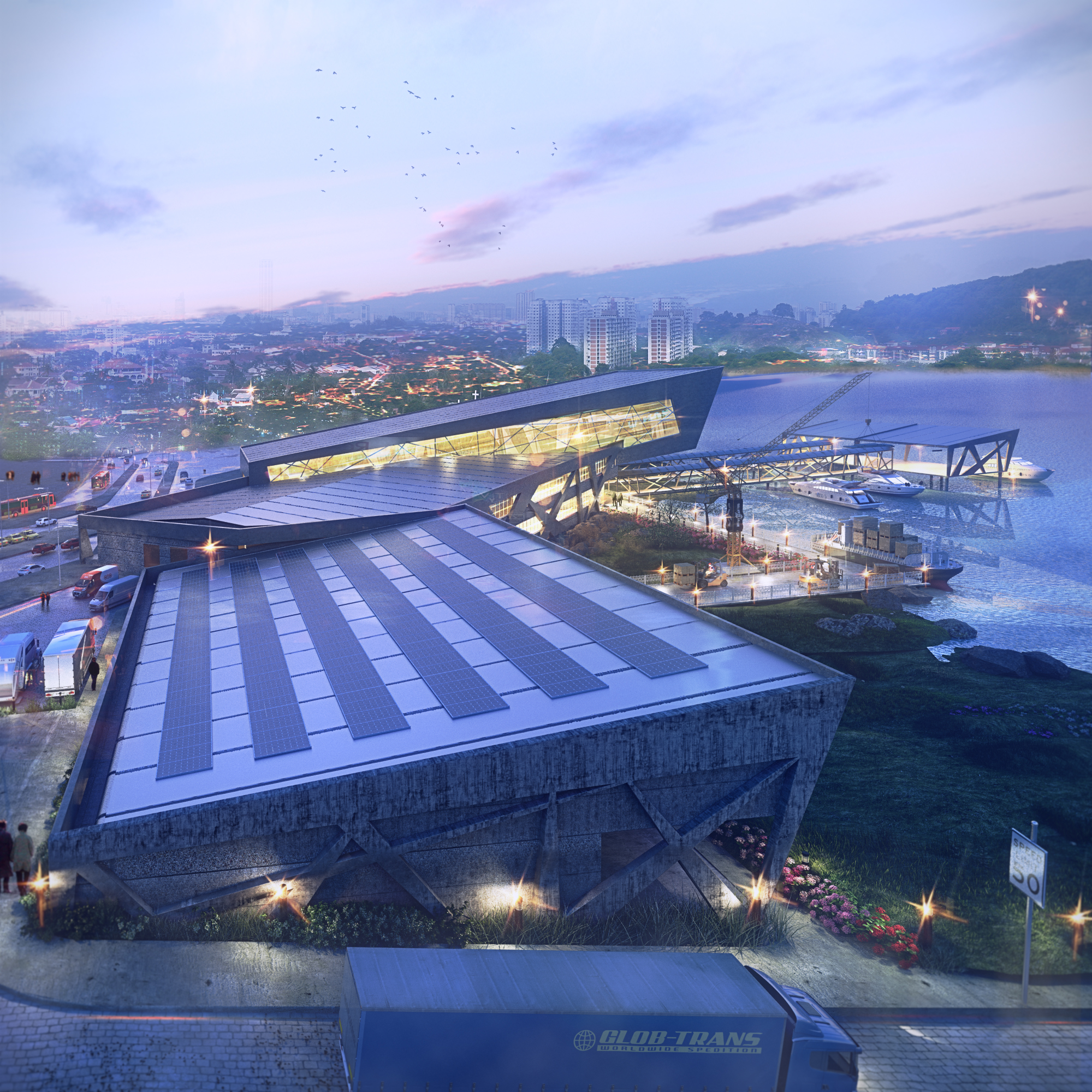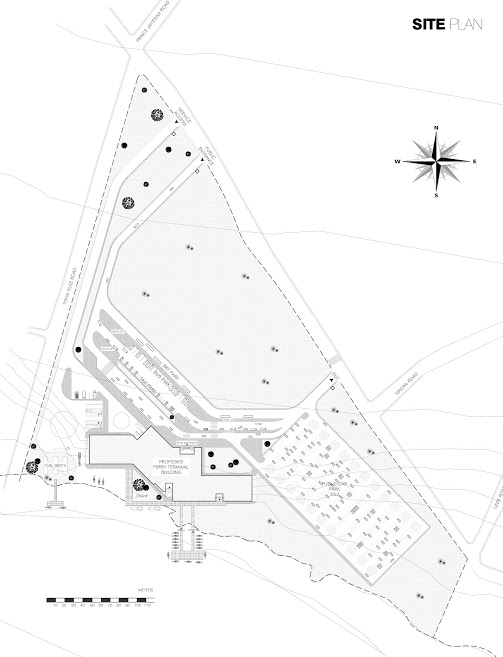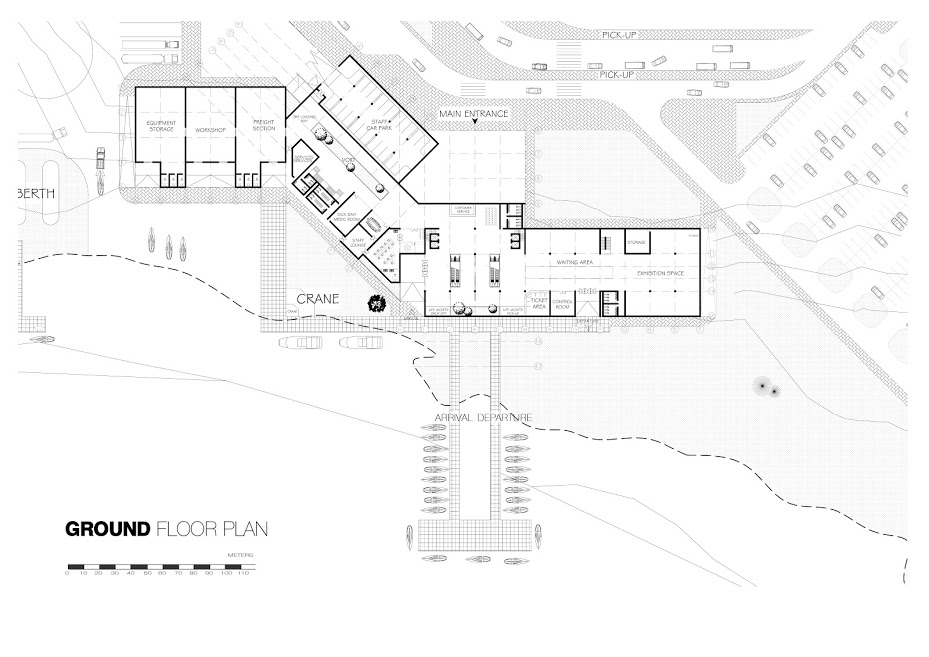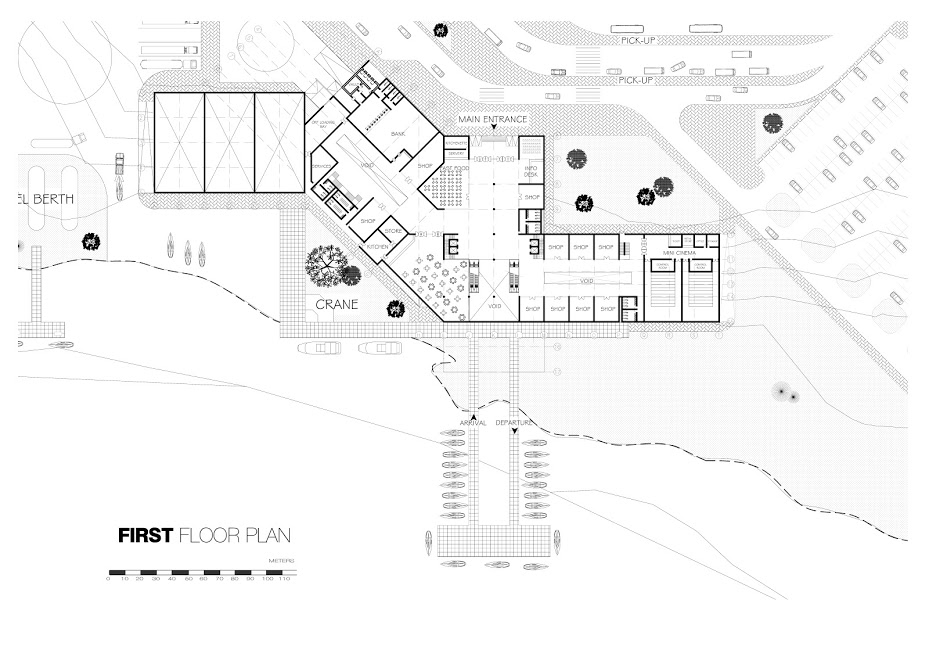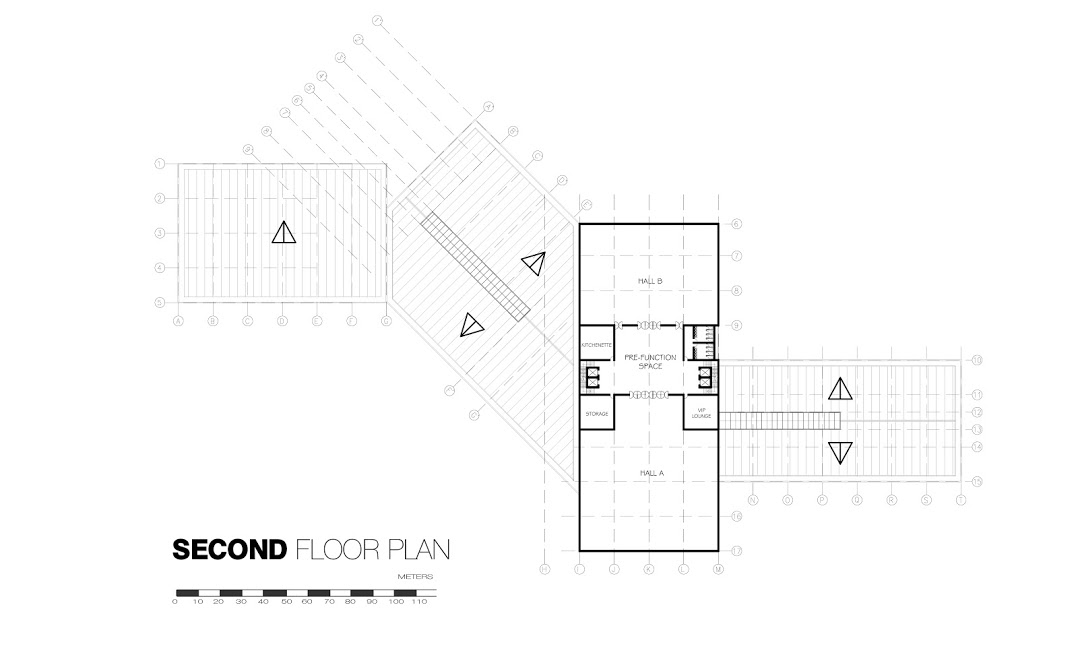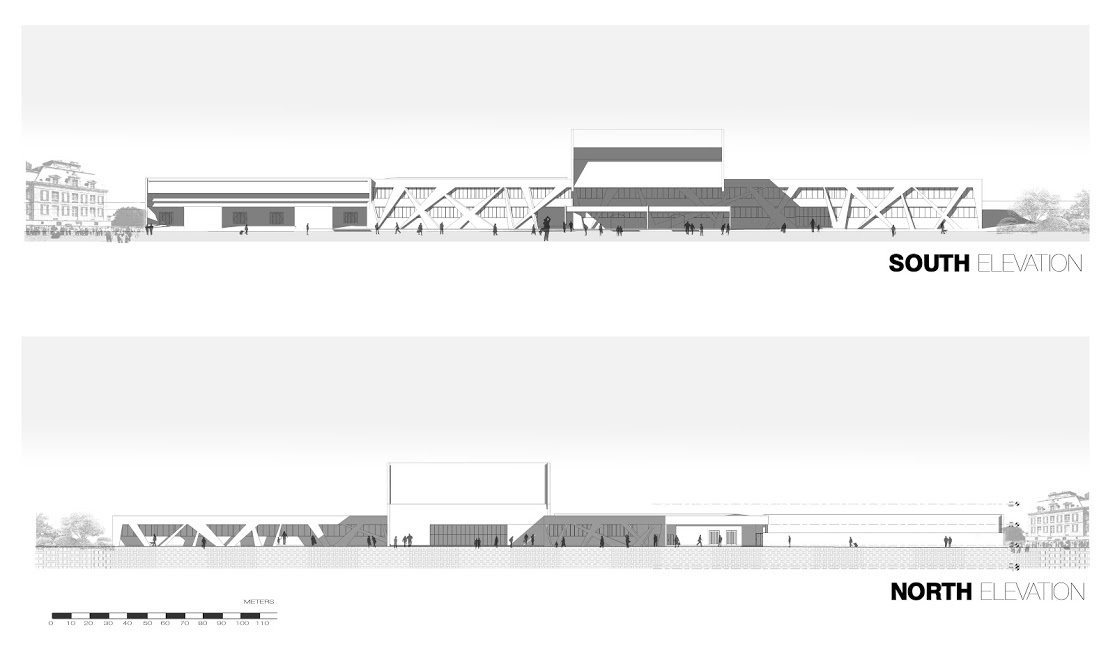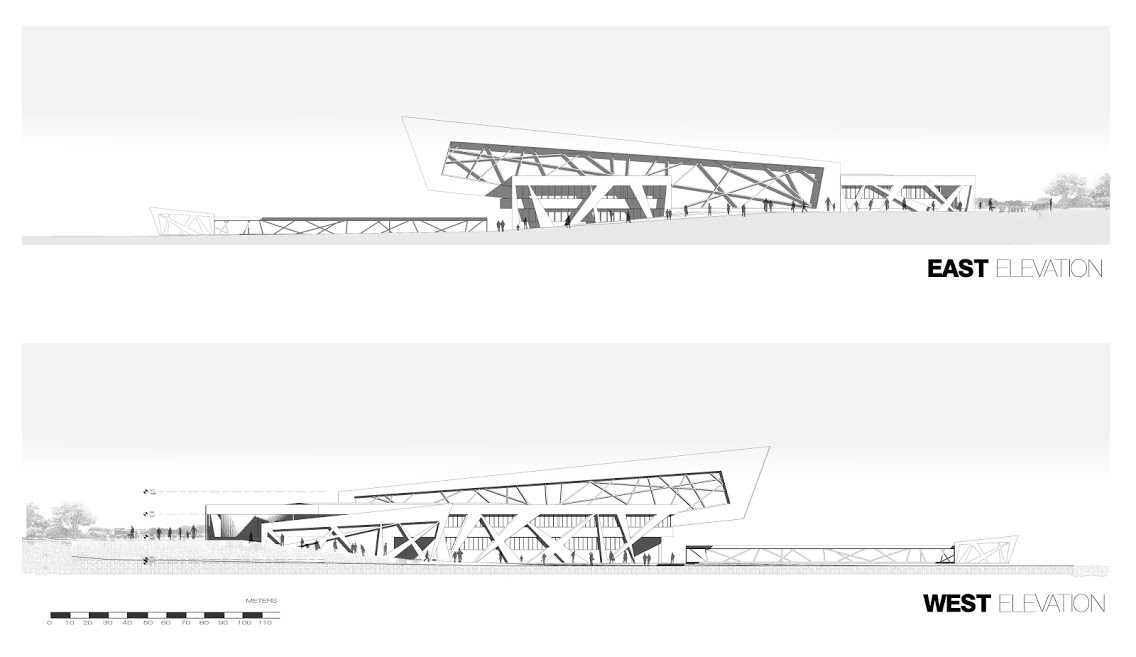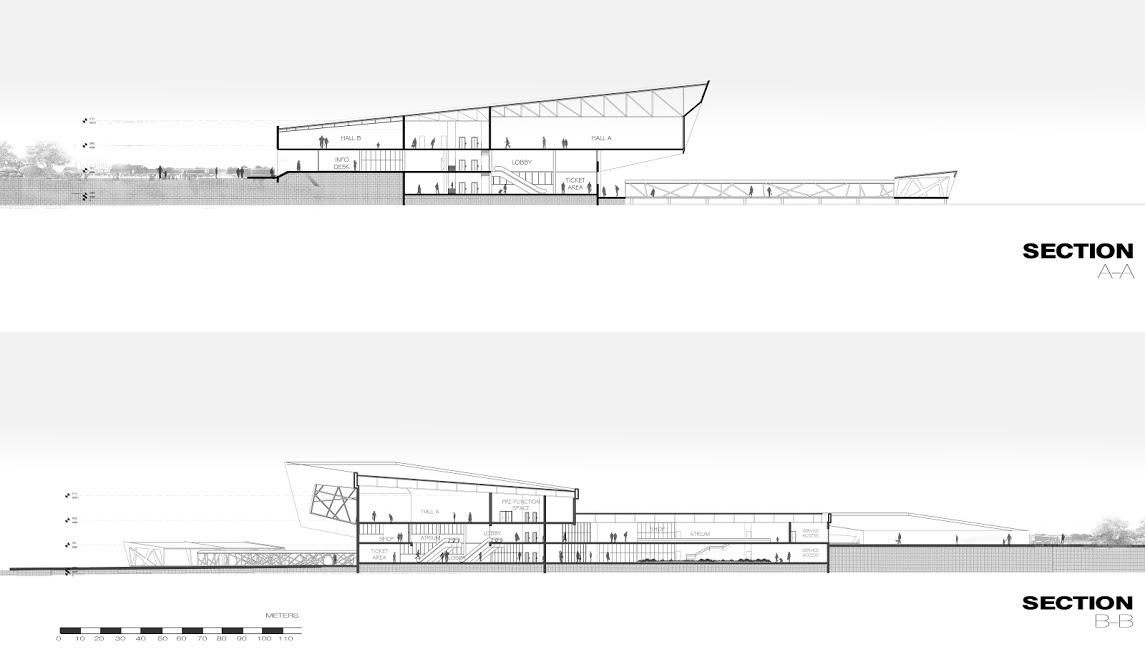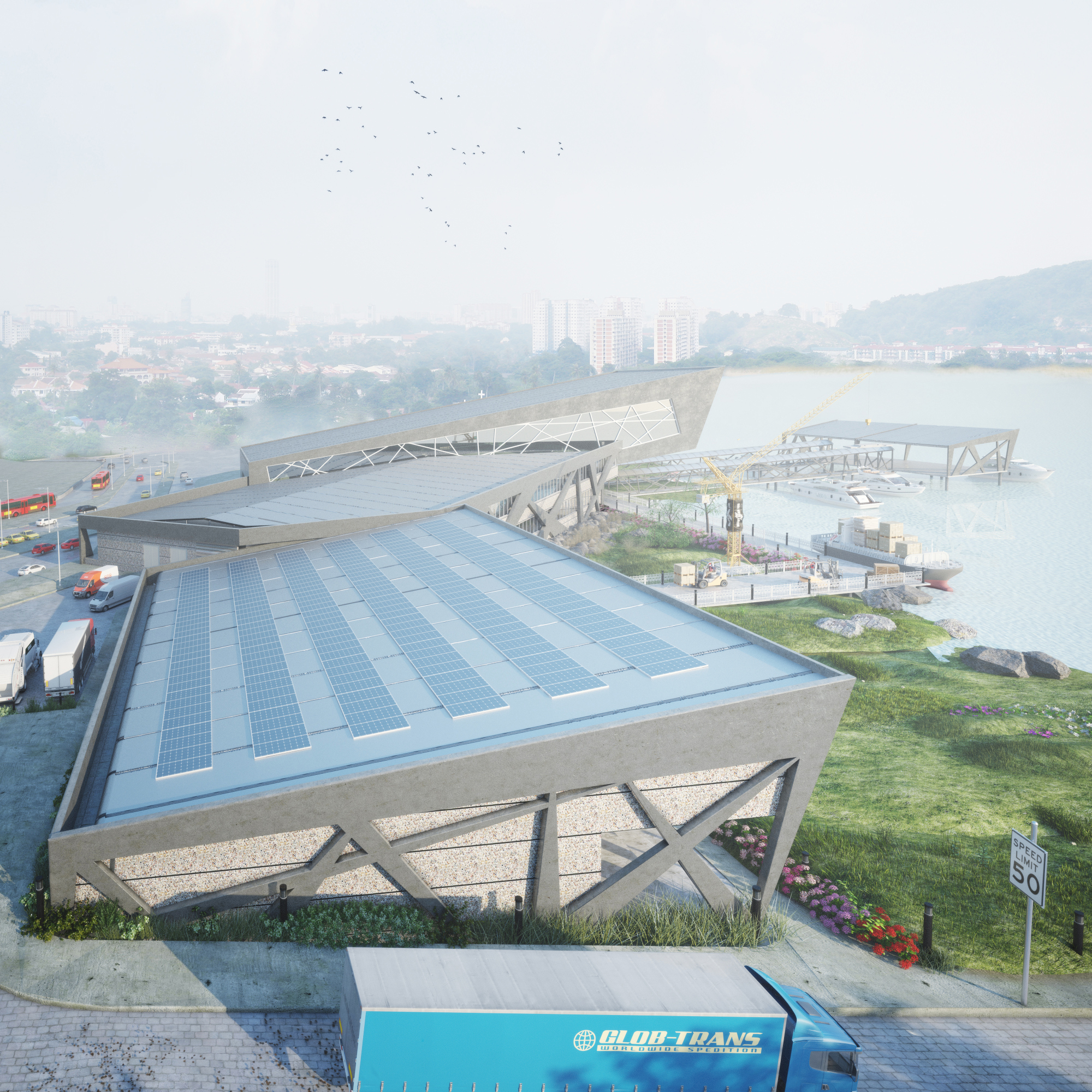Okolie Uchechukwu of Cleec Designs shared with us his thesis project, the Ijede Ferry Terminal, a proposed terminal for the Ijede community while he was a Masters degree student at the University of Lagos (UNILAG) Department of Architecture. This is our first indigenous student project and are very excited to share this with you all.
The Ijede community, a small traditional sub-urban settlement of the Awori people located along the coastal plains of Lagos Lagoon. The community is one of the most prominent communities in Ikorodu Local Government area of Lagos State and it’s the home to West Africa’s largest thermal plant, the Egbin Power Station. The intention of the Ijede Ferry Terminal according to Uchechukwu is to,
“gain a working understanding of the nature of a ferry terminal and the intrinsic details of how its infrastructural network could shape the development of Ijede community, Lagos, Nigeria. It is hoped that this design would lead to fitting architectural interventions, that creates an ambience which eases peoples phobia for water transport and also providing an efficient means of transport.”
The Ijede ferry terminal is designed to be part of a wider and integrated urban design experience, with a peculiar poetic character with spectacular views of the Lagos Lagoon. Uchechukwu describes his design as a synthesis of architecture, landscape and engineering created with an adaptable system that allows for diverse responses to the site with economy of scale and commercial integrations.
The terminal is efficient and adaptive by being able to foster functional interactivity between major parts of the site. It incorporates the sloped nature of the site using a concept based on operational efficiency, safety and accessibility to all. Uchechukwu says, its beauty is in its absence of complications, a presence of clear functions and a rich socio-cultural experience.
Organized on three vertical levels, the ground floor contains the transit, administrative and operational areas. The restaurants, a bank, shopping and a mini cinema are on the first floor, while the top floor contains the halls. The building is finished with a fibre cement cladding framework, which resist all kinds of weather conditions while it forms an intricate artistic network responsible for it’s obvious aesthetics.
The ferry terminal is predominantly self sufficient in energy. Having been sculpted by the forces of nature, the building was designed by carefully calibrating the path of the sun and wind to allow it achieve outstanding energy performance. Hence, making it stand as an environmental model for public construction. The terminal integrated on the roof, beds of solar cells. It utilizes low embodied energy, maximizes both solar and storm protection and incorporates rainwater collection that flushes toilets and other auxiliary functions.
To view more of his works and stay updated with his recent activities, you can follow him via his blog and social media platforms;



